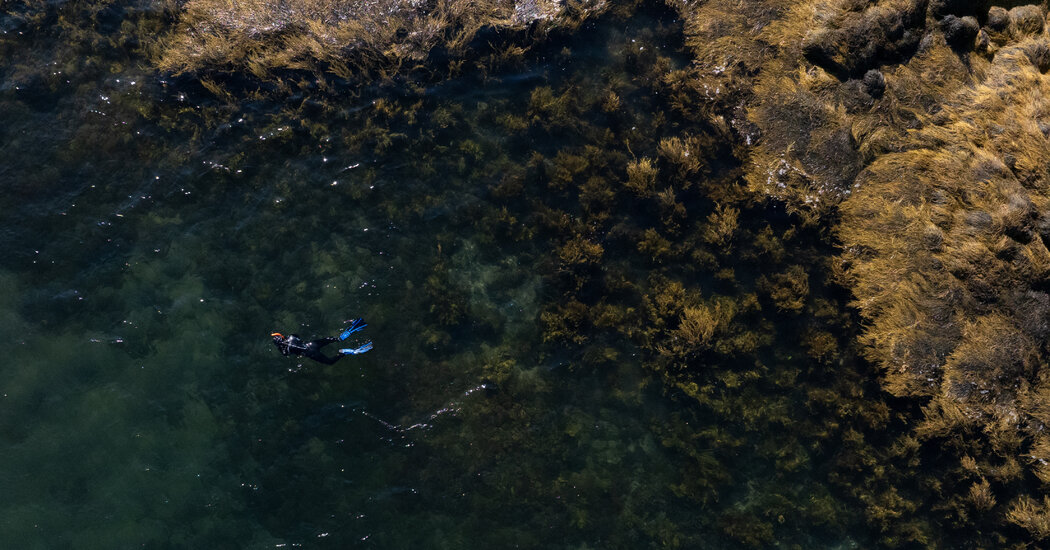A light wind kicks up sparkling wavelets while lobster boats weave among granite islets, with ospreys and a bald eagle soaring overhead.
Cheyenne Adams ignores those surroundings, motoring along slowly on a 21-foot boat. She stares intently at a video screen that reveals a patch of deep-green grass waving in the current just eight feet below the hull.
“There’s eelgrass,” Ms. Adams said. “There’s another little patch of grass, and now we’re getting into the bed. This is a healthy bed.”
Eelgrass, or Zostera marina, is widely distributed in the Northern Hemisphere. Along the Atlantic coast of the United States, eelgrass primarily thrives from Chesapeake Bay to Maine, but it is declining quickly.
Often overlooked because it is underwater, out of sight, the flowering plant plays an important role in coastal environments that is increasingly capturing the attention of researchers.
Physically, eelgrass clarifies water by trapping sediment and protecting shorelines from erosion. Chemically, it buffers ocean acidification through respiration and removes nitrogen that can fuel excess algae growth. And, ecologically, eelgrass meadows provide habitats for dozens of species, including striped bass, lobsters, blue crabs, bay scallops and blue mussels. Other species, including brant, forage on the grass.
